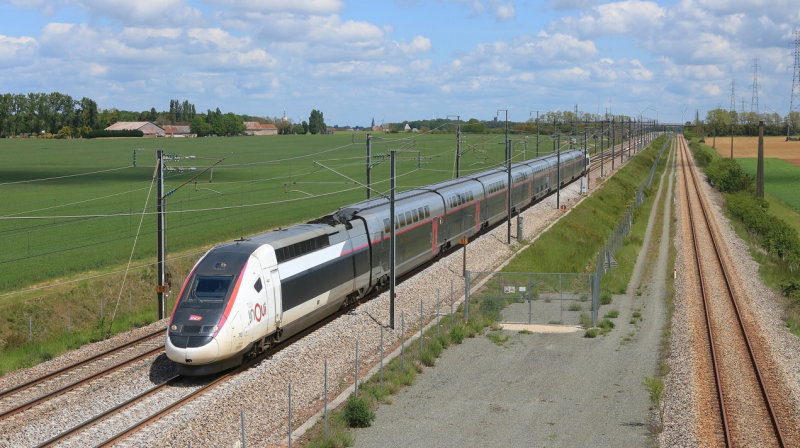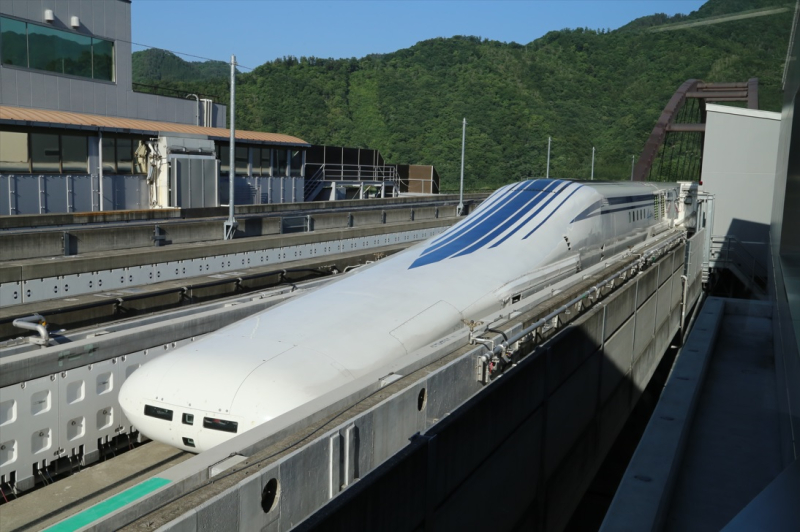Very Fast Trains
Today, very fast trains. The University of Houston presents this series about the machines that make our civilization run, and the people whose ingenuity created them.
______________________
Flying through the French countryside on a train traveling at nearly two-hundred miles an hour is exhilarating, though what’s more exhilarating is traveling alongside a freeway. The cars, moving at a top speed of eighty miles-an-hour, look like they’re crawling.

Much has been said about, and achieved, with high-speed rail. Japan first deployed a high-speed train in 1964 that reached one-hundred-thirty miles-an-hour. France was next, with a line from Paris to Lyon that operated at one-hundred-seventy miles-an-hour. More and more countries have since followed suit, gradually pushing speeds ever higher. Which leads us to ask a question: at what point do the disadvantages outweigh the advantages of going ever faster?
Most high-speed trains roll on wheels. The exception is maglev technology, where a train is suspended above a track by magnetism. Tests show that maglev trains can travel at twice the speed of trains using wheels – thus nearing an astonishing four-hundred miles-an-hour. It would seem that maglev trains represent the future of high-speed rail. But there are many impediments standing in their way.
First and foremost, maglev trains require entirely new infrastructure. An important practical advantage of high-speed trains on wheels is that they can be routed over existing train tracks. Not at high speeds, of course. For that special tracks are needed. But they can nonetheless use existing train tracks, which maglev trains cannot.
Other problems arise from speed itself, whether using maglev technology or not. The Shanghai Maglev train – designed to ferry passengers from the airport to a transportation hub in the city – runs at the typical two-hundred miles-an-hour even though it’s designed for much higher speeds. Why? Substantially escalated energy costs, increased wear and tear on equipment, and magnified noise levels from the pressure wave generated at higher speeds. This, and the fact that time savings are insignificant for such a short run, have derailed the technology.
Higher speeds also place greater demands on track construction, and for a reason that’s not often appreciated. Mounds and dips on a high-speed rail track make passengers feel like they’re riding a roller coaster. So they must be minimized. Even at two-hundred miles an hour, tunnels, viaducts, and extensive earthmoving are critical for a smooth ride. And the faster trains go, the smaller the mounds and dips must be. This is why virtually all high-speed rail lines travel relatively flat stretches of land. Carving through mountains is just too expensive.

One major exception is a new rail line being constructed between Tokyo and Nagoya. Using superconducting maglev technology, over eighty-five percent of the one-hundred-seventy-five-mile line will be through tunnels – many very deep. The project is a technological marvel but comes with a steep price tag.
Is maglev the future of high-speed rail, or will improved high-speed trains on wheels offer a more practical yet adequate alternative? We’ll have to wait and see, though parallels with the fate of supersonic air travel are hard to ignore.
I’m Andy Boyd, at the University of Houston where we’re interested in the way inventive minds work.
(Theme music)
For related episodes, see MAGLEV TRAINS and TUBE TRAINS.
All images are from Wikimedia Commons.
This episode takes its title from the name of the French high-speed rail system, Train à Grande Vitesse (TGV), which is commonly translated as “very fast train.”
This episode first aired July 31, 2025.